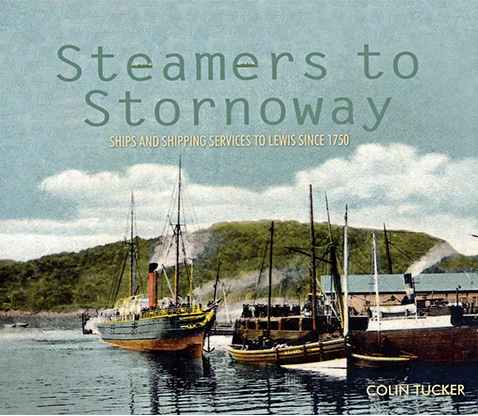Book Review by Bob Chambers.
I love ferry journeys between various Hebridean Islands and the west coast Scottish mainland – even in bad weather. For me, the crossings in both directions are an integral part of my enjoyment of any visit to one or more of the islands. Luckily, I’m a frequent visitor to the Hebrides each year.
However, I have to confess a large dose of ignorance regarding the history of this aspect of Hebridean and maritime history. This is where Colin Tucker’s splendid book comes into its own in relation to Scotland’s largest island – Lewis in the Outer Hebrides. It is now served today exclusively by a ferry service between Stornoway on Lewis and Ullapool on the mainland, a distance of around 50 miles or so. The book is so invaluable for any inquisitive visitor (like myself), islanders, and many others too – including historians and various other academic disciplines.
I feel guilty not having come across the book until now. It really is superb and I would highly recommend it to anyone interested in the subject. It comprises a comprehensive and highly interesting record of the various shipping services that have linked the island of Lewis with Scotland’s west coast since the middle of the eighteenth century.
I love the easy-to-understand language and descriptions in this book. Even the sections dealing with the numerous individual vessels over the years are written in plain, engaging language. There are 24 chapters listed in the book covering almost every imaginable topic one might think of involving the coming of steamships to Stornoway from the 1820s onwards. The book also has interesting information about the pre-1820s era – people have travelled to Lewis by sea for centuries. Indeed, the original settlers reached the island some 7,000 years ago!!
In addition to the 24 chapters (the book is about 200 pages long laid out in a landscape format) there is also a very informative Introductory section and an Epilogue ‘looking back, looking forward’. The ‘looking forward’ part takes us to 2013 – the date of publication. It would be interesting to get Colin’s take on what has happened since then – not just on the Stornoway-Ullapool run but the Scottish ferries situation generally. Another strength of the book is the generous number of black and white illustrations.
There are three things I would like to have seen in the book. First, I think it would have benefitted greatly from one or two clear maps (the one map in the book is not easy to read and comes from an 1883 guide book) – especially showing the various routes over the years between Lewis and the west coast. Second, there is no index (but on the plus side there is a good bibliography). And thirdly, some relevant information about the author would have been useful and interesting – the only brief mention I could find being in the Introduction. Despite these small ‘reservations’ I have no hesitation in highly recommending this book.
You can buy this book direct from Islands Book Trust

